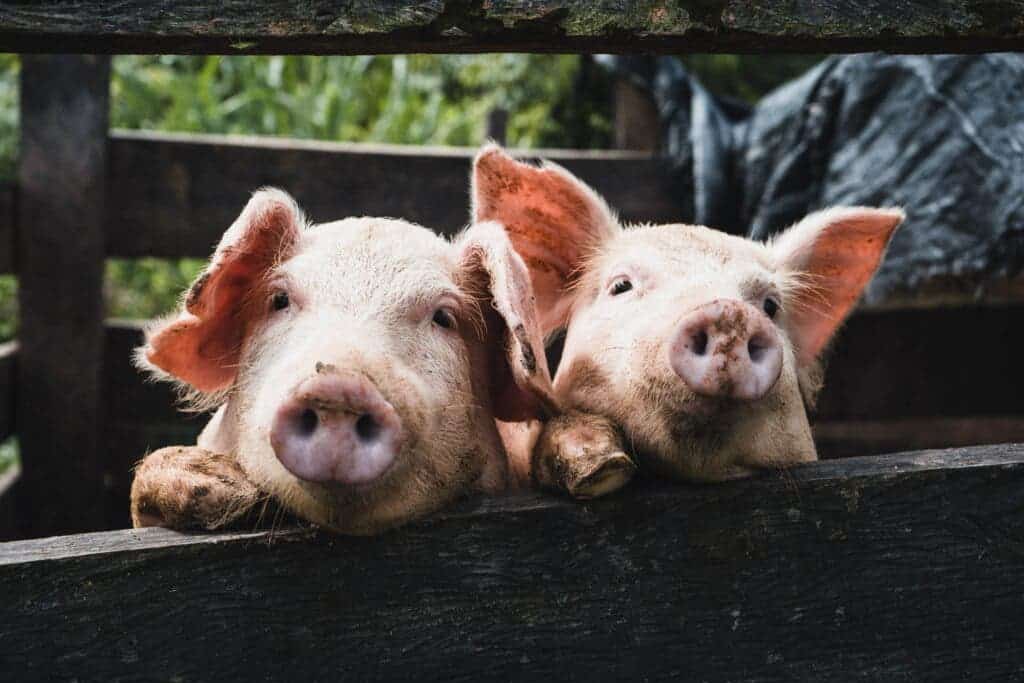We’ve known for quite some time that pigs are some of the more intelligent animals we know. Pigs are not just intelligent, but also emotional and cognitively complex. Pigs have feelings — and now, thanks to a new study, we can understand some of these emotions.

Animal feelings
In the past 20-30 years ago, we’ve started to understand much more about animal emotions. Gone are the days when we thought emotions were for humans only, or even for a select group of animals — most scientists agree that animals have varying degrees of emotional responses, and intelligent animals (like pigs) are emotionally complex.
But how do you measure and analyze their emotions?
“The emotional states of many animals are easily recognizable. Their faces, their eyes, and the ways in which they carry themselves can be used to make strong inferences about what they are feeling,” wrote Marc Bekoff, professor emeritus of Ecology and Evolutionary Biology at the University of Colorado, Boulder, in a 2000 study. “Changes in muscle tone, posture, gait, facial expression, eye size and gaze, vocalizations, and odors (pheromones), singly and together, indicate emotional responses to certain situations.”
In a new study, researchers took this to the next level by studying pig grunts. They collected 7,000 recordings of noises from commercial pigs, from a wide range of situations, both positive and negative. The researchers also designed several experimental mock scenarios, designed to invoke more nuanced emotions. For instance, they had pigs playing with toys or food in an arena or placed unfamiliar objects for the pigs to interact with.
They then designed a machine-learning algorithm to decode whether the emotion is positive, negative, or mixed/nuanced.
When pigs are experiencing negative emotions, they tend to stand still, emit a lot of high-pitched vocalizations, and try to escape. When they experience positive emotions, they like to explore their surroundings and huddle with others.
Researchers noted which events triggered negative emotions: social separation, castration, and of course, slaughter. Meanwhile, pigs liked it most when they could run free, when they were reunited with their mother, and when they could huddle with their siblings.
Overall, there were 19 different categories of contexts in total, and the algorithm was able to accurately classify 92% of them.
Understanding animal mental health
“There are clear differences in pig calls when we look at positive and negative situations. In the positive situations, the calls are far shorter, with minor fluctuations in amplitude. Grunts, more specifically, begin high and gradually go lower in frequency. By training an algorithm to recognize these sounds, we can classify 92% of the calls to the correct emotion”, explains Elodie Briefer of the University of Copenhagen’s Department of Biology at the University of Copenhagen, who co-led the study.
The algorithm could be used to monitor the mental health of pigs, especially by farmers. The mental health of livestock is very important for their wellbeing, but farmers generally only focus on the animals’ physical health. While several automatic system that monitor an animal’s physical health exist, no such analog exists for mental health.
“We have trained the algorithm to decode pig grunts. Now, we need someone who wants to develop the algorithm into an app that farmers can use to improve the welfare of their animals”, says Briefer. In an email to ZME Science, the researcher added that they were also supposed to build the app, but their project was faced with many health-related absences and partners who didn’t receive the funding they were promised by their government on time that they didn’t get to do it. “But what we suggest in this paper, shows that this is feasible, and we hope that some companies might be interested in building it,” Briefer adds.
The method could be implemented in a tool to monitor groups of pigs, Briefer tells ZME Science. It could let the farmer know when the pigs seem happy or when they are distressed, which could produce improvements on the animals’ mental wellbeing. The study could also lay the foundation for using algorithms to better understand the emotions (especially the complex emotions) of other mammals.
“I have been working on the vocal expression of other farm animals (goats, horses, and sheep), and other researchers have as well (on chicken for instance), but this is the first study gathering such a wide variety of sounds and showing that it is possible to differentiate positive from negative emotions based on vocalizations,” Briefer tells ZME Science. “The same should be done at that scale for other species as well, so that tools to automatically recognize emotions could be built for other farm animals. This would add a lot to their welfare, which is still strongly based on their physical more than mental health.”
The more we look into the picture of animal cognition, the more complex the picture becomes.
“With this study, we demonstrate that animal sounds provide great insight into their emotions. We also prove that an algorithm can be used to decode and understand the emotions of pigs, which is an important step towards improved animal welfare for livestock”, concludes Briefer.
The study has been published in Scientific Reports.
Was this helpful?



